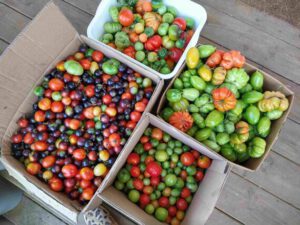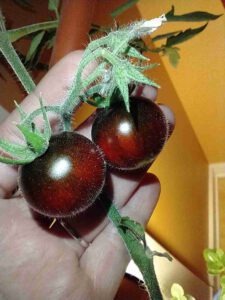How To Grow Tomatoes In Greenhouse
Tomatoes are a versatile crop that can be grown in a greenhouse, depending on the climate. In temperate climates, tomatoes can be sown outdoors in late spring or early summer and transplanted into the greenhouse when they reach 6 to 8 inches tall. In cold climates, tomatoes can be started indoors from seed in late winter or early spring, and transplanted outside when the plants are large enough to handle transplanting. Either way, tomato plants should receive full sunlight and ample irrigation.
Tomato GreenHouse Menu
What is a greenhouse?
Greenhouse is a structure made of glass or plastic that is used to grow plants. The plants are grown in soil or other growing medium and the light and heat needed for their growth come from the sun or grow lights. Greenhouses are used to produce food, flowers, and other plants.
How do you grow tomatoes in a greenhouse?
Tomatoes are a warm weather crop and grow best when the temperature is above 65 degrees F. They can be grown in a greenhouse where the temperature can be controlled. The first step in growing tomatoes in a greenhouse is to select a location for the greenhouse. The location should have plenty of sunlight and be close to a water source. The soil should also be well drained.
The next step is to prepare the soil. The soil should be amended with compost or manure before planting. Tomatoes need lots of nutrients, so adding organic matter to the soil is important. The soil should also be pH balanced prior to planting. Tomatoes grow best when the pH level is 6.5-7.0.
Once the soil is ready, it’s time to plant the tomatoes.
Advantages of growing tomatoes in a greenhouse
Tomatoes are a popular vegetable that can be grown in a greenhouse. There are many advantages to growing tomatoes in a greenhouse. One advantage is that you can control the climate and the amount of sunlight the plants receive. This can result in larger, healthier plants with more fruit. Greenhouses also protect plants from pests and diseases, which can reduce the need for pesticides. Additionally, growers can extend the growing season by using greenhouses, allowing them to grow tomatoes earlier or later in the year than they would be able to outside.
Disadvantages of growing tomatoes in a greenhouse
problems with growing tomatoes in a greenhouse
The benefits of growing tomatoes in a greenhouse are plentiful: the plants are protected from the wind and rain, and the gardener can control the temperature and humidity. However, there are some problems that can occur when growing tomatoes in a greenhouse. The first issue is that the plants may not get enough light. Greenhouses are often dark, and this can prevent the plants from flowering and fruiting. Another problem is that the soil may not be fertile enough to support tomato growth. And finally, pests and diseases can be a problem in greenhouses, especially if the air circulation is poor.
Too much heat
The Earth is going through a lot of changes right now and many people believe that it’s because of the amount of heat that is being emitted into the atmosphere. The problem with this heat is that it’s not just affecting the environment, it’s also affecting us. We’re seeing more and more extreme weather conditions and health problems are on the rise. The time has come for us to start taking this problem seriously and do something about it.
Poor air circulation
Poor air circulation is a common problem in both homes and offices. It can cause discomfort, stress, and health problems. In this article, we will discuss the causes of poor air circulation and offer some solutions.
One of the most common causes of poor air circulation is inadequate ventilation.
Temperature fluctuations
The weather is always changing, and that means temperature fluctuations are always happening, too. In the summer, temperatures can soar into the high 90s or even 100 degrees Fahrenheit, while in the winter they can drop below freezing. These temperature fluctuations can cause problems for both people and animals.
In the summer, high temperatures can result in dehydration, heat exhaustion, and even heat stroke. The elderly and young children are especially at risk for these conditions. Pets can also be affected by the heat. They may overheat or suffer from sunburns.
In the winter, cold weather can lead to frostbite and hypothermia. Elderly people and young children are also at risk for these conditions in the winter. Pets can also be affected by the cold weather. They may become dehydrated from drinking too much water to stay warm or develop ice balls on their fur.
High humidity
The weather phenomenon known as high humidity is characterized by an unusually high amount of water vapor in the air. This can make conditions feel extremely sticky and uncomfortable, due to the increased body heat that is required to evaporate sweat. In addition to making it difficult to stay cool, high humidity can also aggravate respiratory problems and contribute to the formation of mold and mildew.
Pests and diseases
Why are my tomato plants wilting in the greenhouse?
Tomatoes are a popular vegetable to grow in greenhouses. They are susceptible to wilting, however, when the environment is not correct. There are several reasons why your tomato plants may be wilting in the greenhouse and by identifying the cause, you can take corrective action. First, there is heat stress. Heat stress occurs when the temperature in the greenhouse is too hot or too cold for the plants. Heat stress may be caused by incorrect ventilation and/or light levels.
Will wilted tomato plants recover?
When tomato plants start to droop, it can be a sign that they are not getting enough water. If you catch the problem early, you may be able to save the plants by giving them more water. However, if the plants have been wilting for a while, they may be too far gone.
Conclusion
If you want to enjoy homegrown tomatoes all year round, then consider growing them in a greenhouse. It’s a fun and rewarding project that will yield delicious results. Follow the tips in this article, and you’ll be on your way to enjoying homegrown tomatoes in no time!
Helps Us Grow – Share If You Like


